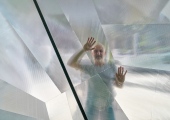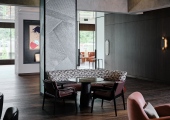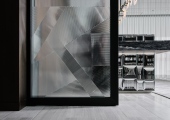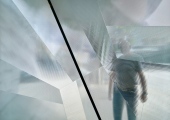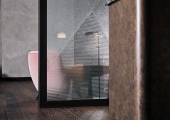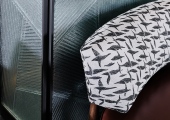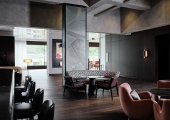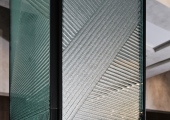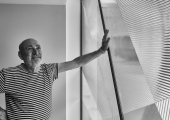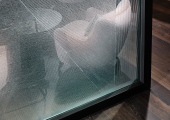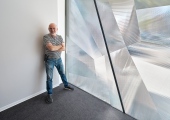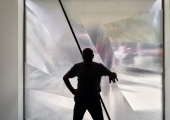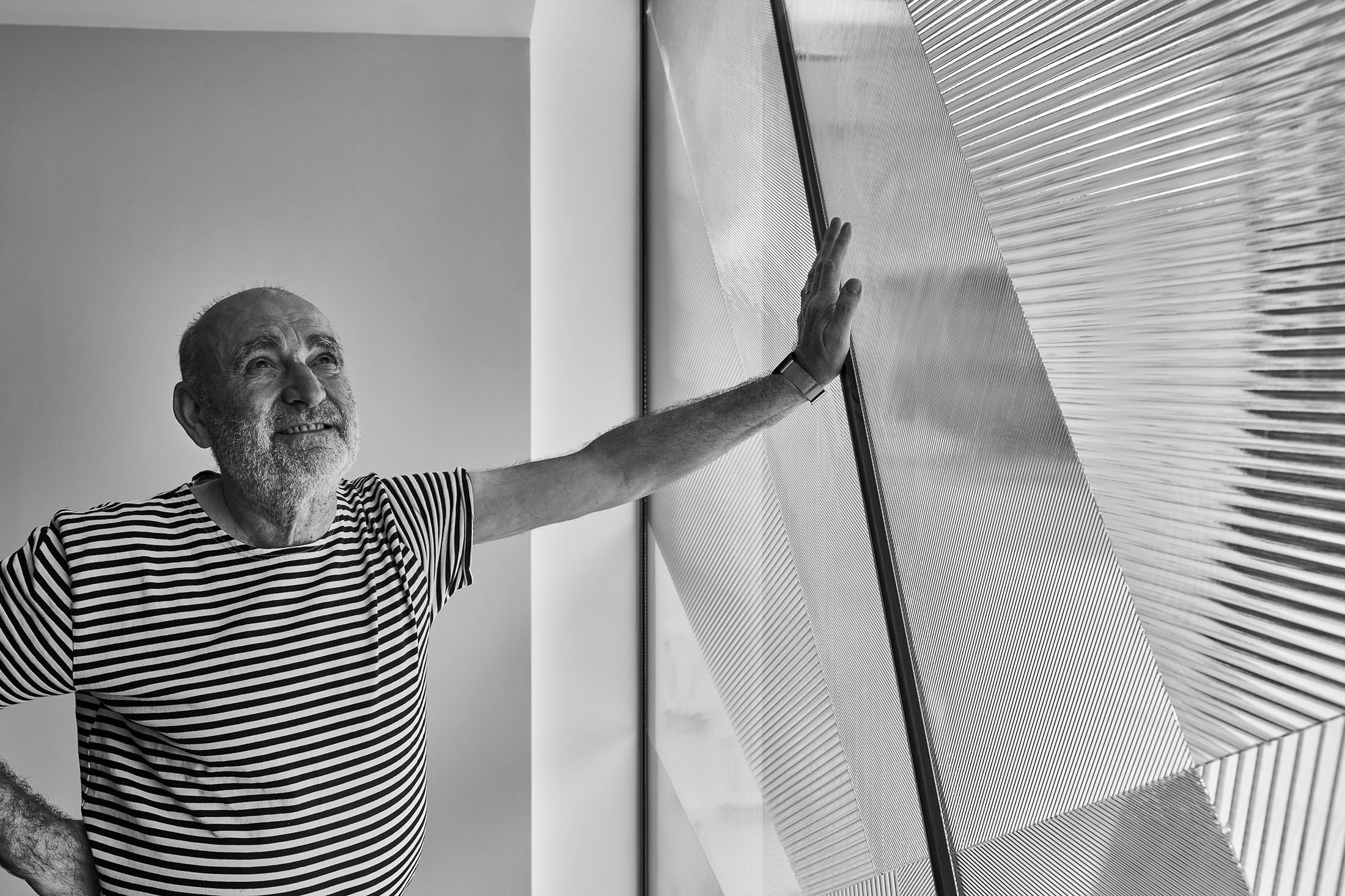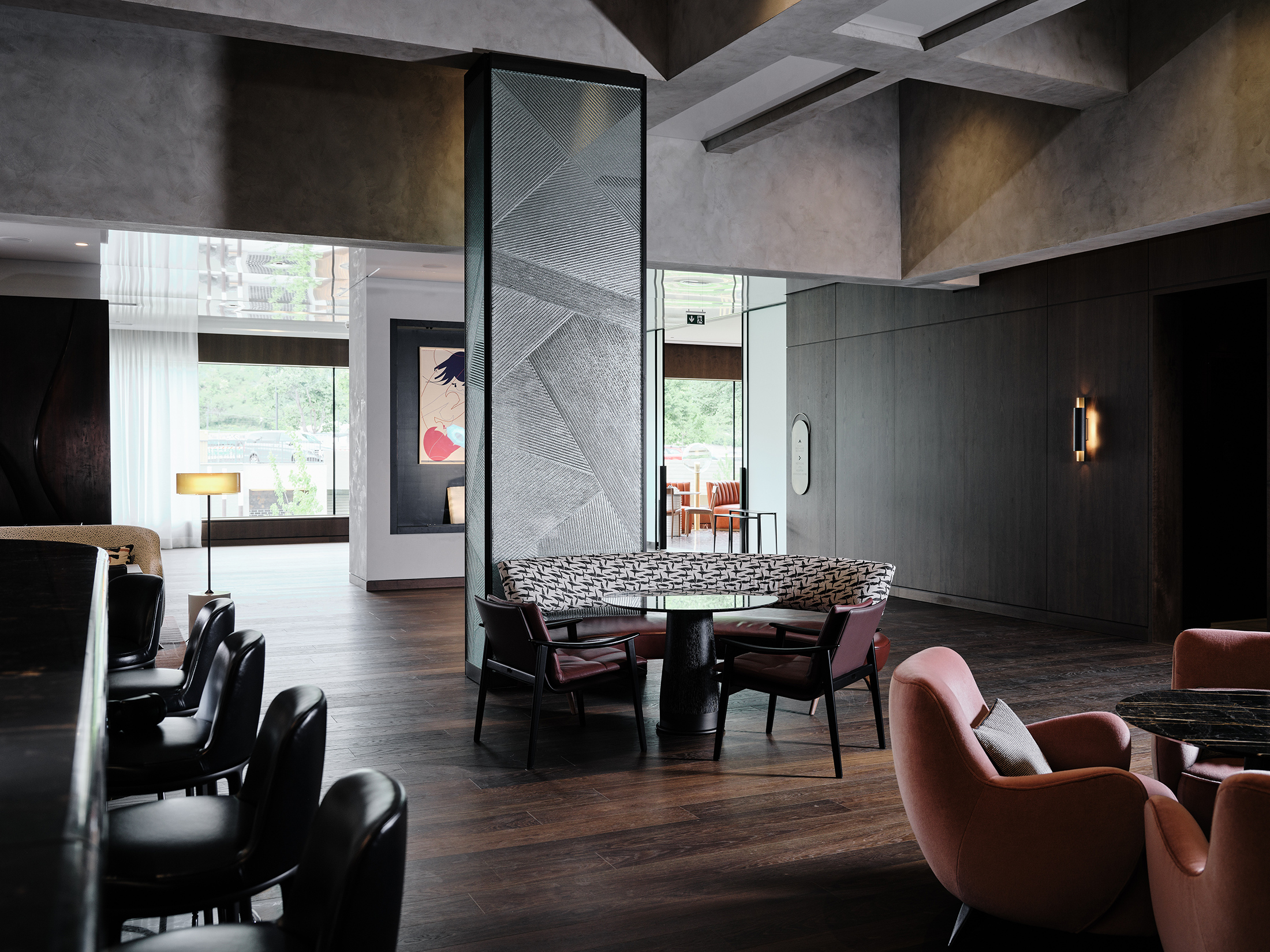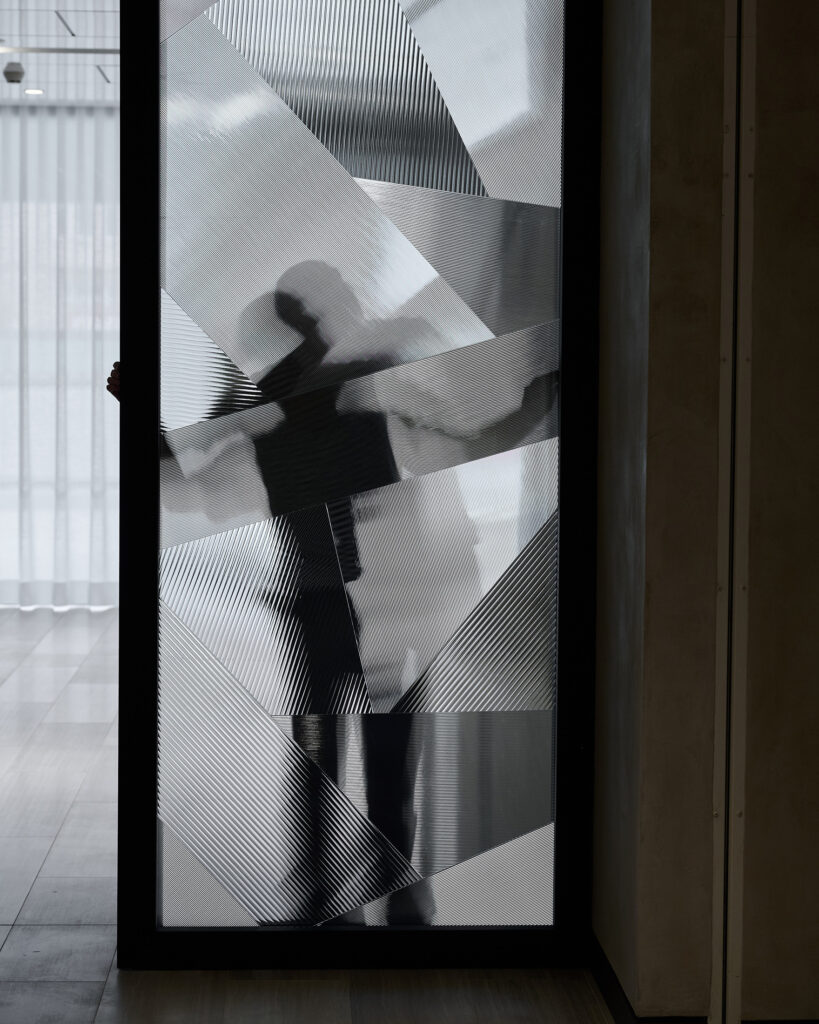Architectural studio: TaK Architects
Lead Architect: Marek Tichý
Glass panels: Zdeněk Lhotský
| In collaboration with: | OGB s.r.o. – vrstvené sklo a instalace |
| Sklo Suchánek – lept skla | |
| SOLLUS NÁBYTEK s.r.o. – výroba konstrukce a mosazných obkladů |
| Photography: | Vladimír Kiva Novotný (https://kiva.cz/) |
| Vojtěch Veškrna (https://www.veskrna.cz/) |
In collaboration with TaK Architects and lead architect Marek Tichý, Zdeněk Lhotský, founder and leader of Studio Lhotský, has created a striking series of vertical glass panels for the new Fairmont Golden Prague Hotel. These works, combining revived acid-etching techniques with contemporary polymerized ornamentation, represent a seamless blend of tradition, innovation, and architectural dialogue.
Spanning the ground floor of the hotel lobby and the elevator lobby on the hotel floors, including three elevators, and extending to large-scale glass sculptures on the façades facing Pařížská Streetand Miloš Forman Square—the installation showcases the Czech Republic’s world-class craftsmanship in glassmaking. The result is an immersive artistic experience that enhances the hotel’s identity and invites guests to engage with the space in a unique and memorable way.
Read the full interview with Zdeněk Lhotský to discover the creative process behind this project.
Can you tell us more about the works you are creating for the Fairmont Golden Prague Hotel and describe your creative process?
There are essentially two entirely new approaches involved. The first uses the traditional technique of acid-etching glass, which was widely used in the second half of the twentieth century but had been almost forgotten for quite a while. What’s new here is that the glass is assembled according to a designed template, etched, and finally laminated onto float glass—this step is in response to safety regulations, which have become much stricter in recent years. The second method is quite similar in principle, but instead of etched glass, it uses ornamental glass, which creates a strong optical effect while preserving the subtlety of the glass panel.
Did you encounter any specific technological challenges during the implementation of this project?
Yes. As far as I know, neither of these approaches has been used in quite this way before, which posed a significant challenge—both for me and my design process, as well as for the partners with whom I realized the works. That includes Jiří Suchánek and the company OGB, led by Mr. Rainer.
How do you perceive the way your glass works communicate with the architecture of the hotel?
The use of glass art in architecture has a long tradition—not only here, but throughout the cultural world—and there’s an enormous number of works created in this context. That, in itself, is a great incentive to invent something new, and I think we’ve succeeded in doing just that. If all goes well, this lays a solid foundation for developing both approaches further in the future. In this case, my works stand on the boundary between design and fine art, with individual pieces leaning more to one side or the other.
How do you perceive the collaboration with Marek Tichý from TaK Architects on this project? Did his architectural approach influence your own creative decisions or process in any way?
I view the collaboration with architect Marek Tichý as entirely positive. The architect of a building is essentially the director of the project’s realization, and his opinion is absolutely key for me. That’s one of the reasons I enjoy working within architecture—because it ultimately comes down to a compromise, or a harmony of viewpoints. This creates the kind of creative tension that is necessary for producing something truly high-quality—and hopefully timeless. Marek and I understood each other quite well, even when our ideas slightly diverged at the beginning. We found a way to reach a mutually acceptable solution together. From my perspective, the result is excellent.
The project includes or will include works by other prominent Czech artists. What does it mean to you to be part of such a collectively oriented project? Do you see it as an opportunity for dialogue between different artistic approaches?
The project will be full of artistic works and will undoubtedly become something truly exceptional. This was also true at the time the original hotel was built—Hotel InterContinental featured works by many leading Czech artists. That’s why this project was a major challenge for me, and being in partnership with works by such artists as Stanislav Libenský and Jaroslava Brychtová is a tremendous honor and responsibility.
What would you like hotel visitors to take away from their encounter with your works?
I would like my works to enhance the stay of guests coming from all over the world and perhaps also to highlight that we have genuine expertise in working with glass—and that we are worthy partners for similar artistic projects globally. A hotel is all about communication; it’s a large organism, much like a ship. It’s important to make guests feel comfortable, and perhaps even surprised or intrigued, so they feel good during their stay and have a reason to return—maybe even because they saw interesting works of art here.

